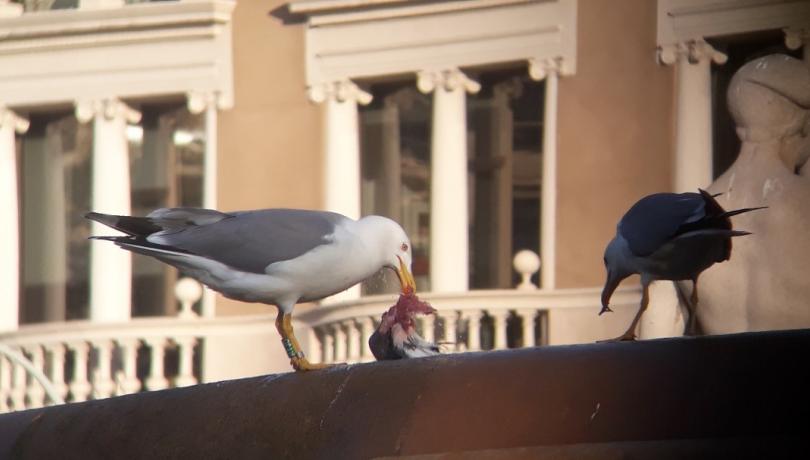A study led by researchers from the ICM-CSIC and the EBD-CSIC has estimated the seeds dispersed both inside and outside Barcelona based on the movement of gulls monitored by GPS telemetry and seeds detected in their diet.

An international team led by the Institut de Ciènces del Mar (ICM-CSIC) and the Doñana Biological Station (EBD-CSIC) has investigated how gulls can spread seeds within Barcelona through faeces and pellet deposition through their movements both inside and outside the city. Researchers from the Agència de Salut Pública de Barcelona (ASPB), the Institut Catala d’Ornitologia (ICO) and the Centre for Ecological Research from Hungary have collaborated in this study.
“Birds can play a major part in the spread of plants, including alien species” explains Víctor Martin, a postdoctoral researcher at the Doñana Biological Station.
Seeds can be ingested, either by directly consumption or by consuming other animals that consume seeds, and then expelled elsewhere after gut passage. “If dispersal occurs within cities, it may cause problems for urban green areas management and alien species may endanger the local biodiversity of the cities”, says the researcher.
Most seeds lack fleshy fruits and have small seeds, indicators that gulls ingest them by consuming other prey of smaller size (e.g. rock pigeons and monk parakeets), which are granivorous (see picture). Other plant species present fleshy fruits that would be consumed directly by gulls.
In this study, publiched recently in the journal Science of the Total Environement, the authors focused on the Yellog-Legged Gull (Larus michahellis), an opportunistic seabird with stable populations within urban areas such as Barcelona and adapted to exploit urban resources.
GPS bird tracking
For the research, spatial movements of 20 gulls tagged with GPS devices were monitored between 2018 and 2019. This gull species is now one of the most numerous and common gull in the city known for its trophic plasticity (they consume species occupying different positions in the food chain) so its role in the seed dispersal could be important.
“Understanding dispersal and spatial patterns can help to manage alien species within urban green areas”, explains Tomás Moltavo, a researcher at ASPB.
The research team used the daily movements, combined with data estimating the retention times of plant seeds in their guts, to develop a plant dispersal model for faeces and pellets. The study highlighted seven alien species regularly carried by the gulls: Ficus carica, Echinochloa cruss-galli, Solanum chenopodioides, Solanum eleagnifolium, Actinia deliciosa, Washingtonia robussta, Cuscuta cf. campestris.
The gulls ingest seeds together with their main food (rock pigeons) or directly, and results indicate that more than 1,000 seeds were dispersed every day by gulls within and beyond Barcelona. About 95% of all seeds transported by gulls are dispersed within the city, most of them being moved over distances around 700 m. But the remaining 5% of seeds could be moved up to 35 km beyond the city limits.
Of the seeds that fall within the city, around 30% of them reached urban green areas (e.g. urban woodlands, green urban parks and urban grasslands) likely to be suitable for plant establishment.
In this sense, Raül Aymí, a researcher from ICO, states that “these results suggest that gulls may be important seed dispersal vectors between urban green areas and open the door to other studies, such as how birds could be contributing to the expansion of alien species in cities".
Finally, the ICM-CSIC researcher Joan Navarro concludes that “this work along with other findings framed within the project BCNGulls provide useful information to understand the urban marine ecology, specially interactions with human interests and potential ecosystem services provided by the population of the urban gulls in Barcelona”.